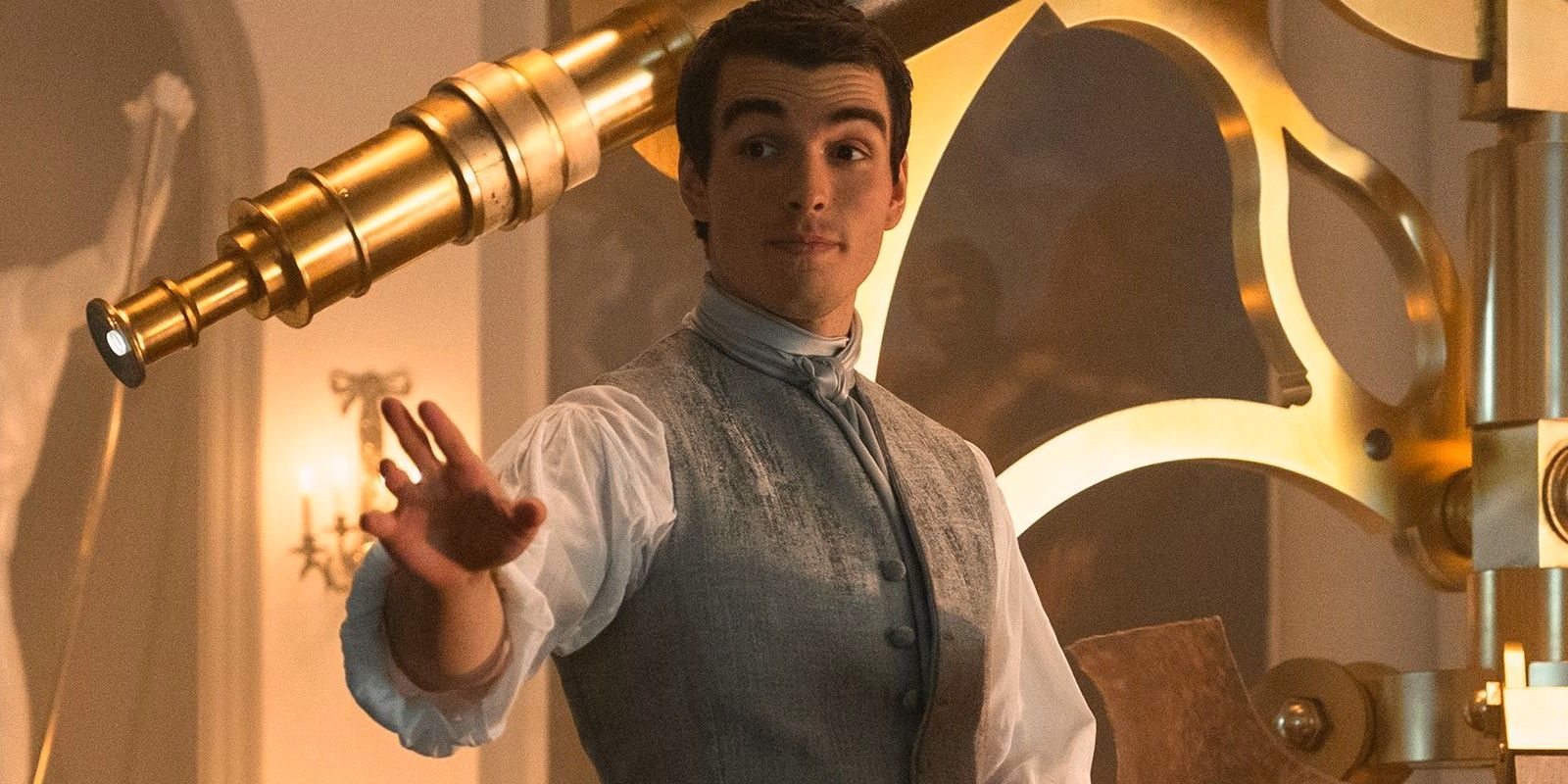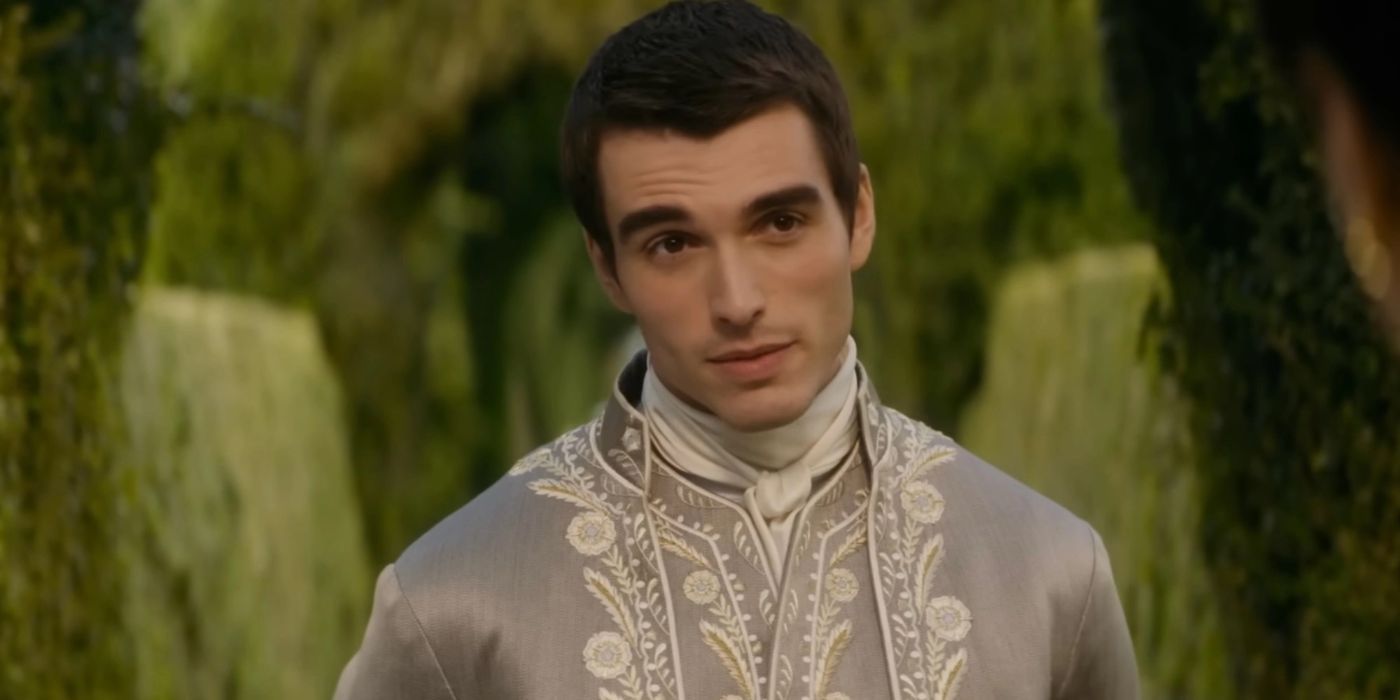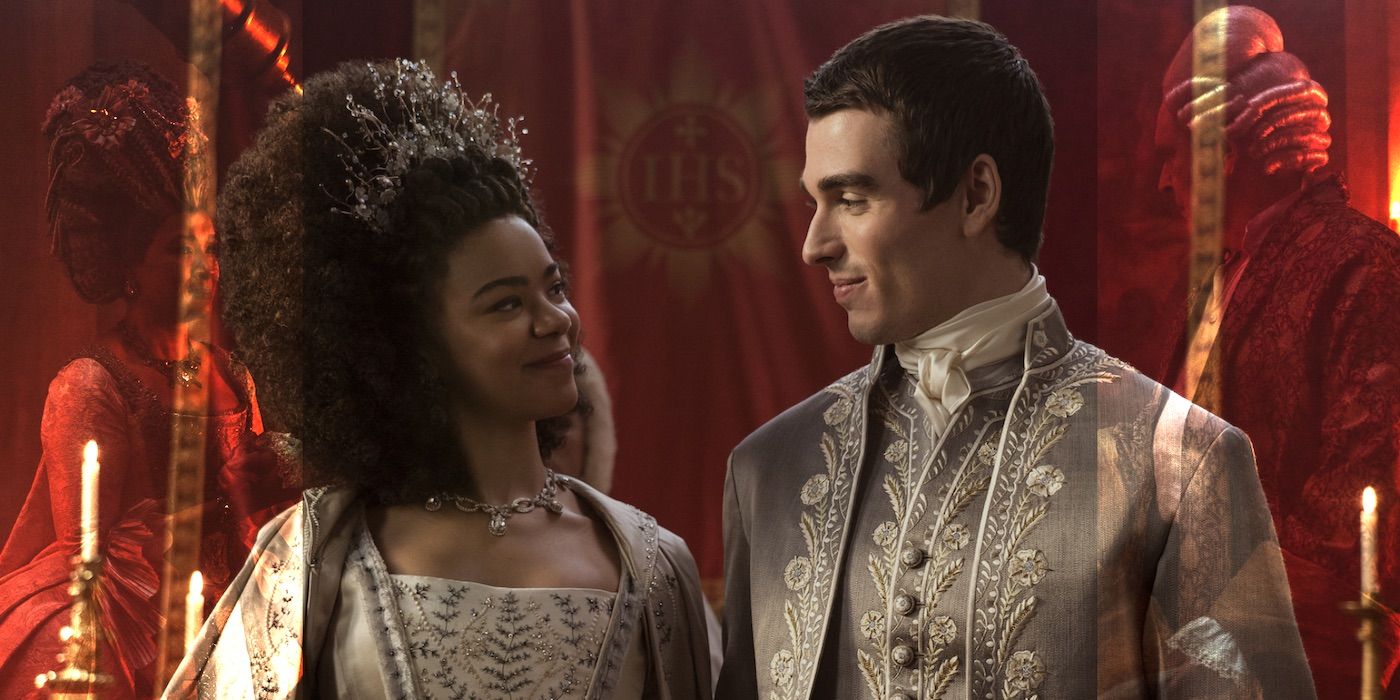King George’s Bridgerton appearances in seasons 1 and 2 are brief, and he is mentioned infrequently – partly because he’s not meant to be a major character and partly because, by that point in time, he was simply too ill to appear publicly. Queen Charlotte, meanwhile, establishes George as a key character, of course. Played in Bridgerton by James Fleet, King George III is portrayed in the spin-off by Corey Mylchreest, in his early 20s.
King George III’s three appearances in Bridgerton are initially only relevant because of what they reveal about Queen Charlotte. The brief dinner scene with Queen Charlotte and King George III in Bridgerton Season 1 provides a somewhat true-to-life explanation for Queen Charlotte’s interest in the fictional Lady Whistledown. As soon as we see how tortured King George III has become, and how much this disturbs his wife, it becomes perfectly clear that Charlotte needs a distraction – and Lady Whistledown provides such a perfectly enveloping and delightful diversion that, at times, Queen Charlotte seems to forget her husband’s poor health. Queen Charlotte goes even further into exploring their romance and their ongoing relationship dynamic, as well as his illness.
What Queen Charlotte Gets Right About How King George Was Treated
As Queen Charlotte: A Bridgerton Story demonstrates, King George III was put through medically-approved hell for the sake of “improving his condition”, as Queen Charlotte reveals in horrifying detail. Rather than opting into the treatment, George was moved to Kew by force, by a team of court physicians and then, finally, by leading mental health expert Dr Francis Willis, whose methods were cruel and beliefs misguided. Willis believed mental illness was a product of overexcitement, and the natural remedy was restrictive, calming measures. These included:
- Confinement in a straitjacket
- Skin treatment with arsenic powder (a poison that caused blisters) to “draw unwanted humors out”
- Extreme fasting and purging
- Ice-cold baths to shock the illness from his body
- King George was denied cutlery other than a spoon at mealtimes, and forced to eat only soft food like a child
- Total isolation from family
- No remit to leave the house alone, where he was confined to the first floor only
Unlike in Queen Charlotte, when George was being treated with these torturous methods, which continued throughout his life, Charlotte and his daughter would be at Kew as well. The extent of the treatments are shown in Queen Charlotte, though some of it is left to the imagination, making them arguably even worse
Queen Charlotte Settles The Debate On King George’s Illness
Queen Charlotte clearly falls on the side of modern theories on King George’s “madness”, following the far more sympathetic line that he struggled with debilitating psychological issues – hallucinations, absences, and bouts of mania included. While his doctor does suggest that talking through George’s problems is the right approach, that more modern therapy style quickly gives way to physical abuse that simply compounds the King’s condition.
King George’s Treatment Isn’t The Only Change Queen Charlotte Made
King George’s Bridgerton treatment is definitely not the only change made in the series. Bridgerton’s universe is ultimately historical fiction, using real figures from history to tell a fictional story, and the Queen Charlotte series maintains that. The most obvious example in the series is the “Great Experiment” when Queen Charlotte becomes the queen. While there is historical evidence to suggest that Queen Charlotte’s Portuguese lineage also includes African ancestry, and she is sometimes referenced as the first Black Queen of England, there was no real shift in England when she became a monarch to include people of color in higher social standing.
Likewise, the timeline in Bridgerton doesn’t entirely line up with the real-life history of England. While Charlotte is said to have primarily been raised by her older brother after the death of her parents in the show, that isn’t entirely true. In 1761 when Charlotte is adjusting to life in England with George, Queen Charlotte’s mother would have still been alive in the real world. Her father did die when she was eight though, so the series took liberties with her family origin in order to tell the story of her brother escorting her to an arranged marriage.
The point is also made in Queen Charlotte: A Bridgerton Story that King George’s mother and her advisors are the ones who chose Charlotte to be George’s wife. According to the Los Angeles Times, that’s not entirely true either. Charlotte was someone of a noble bloodline who was added to a list of options for George at the last minute for his arranged relationship. Some of the stipulations included a woman who was a Protestant because of the religious links to the crown at the time, as well as a woman who was educated but not an intellectual, so she wouldn’t interfere with the King’s decisions. Bridgerton’s Queen Charlotte series does depict a similar discussion, but George isn’t given a choice.
Of course, Queen Charlotte: A Bridgerton Story fans do understand that not everything in the series is going to be historically accurate when going into the new stories. What provides the audience with a good story is going to trump historical accuracy for the Bridgerton universe.








